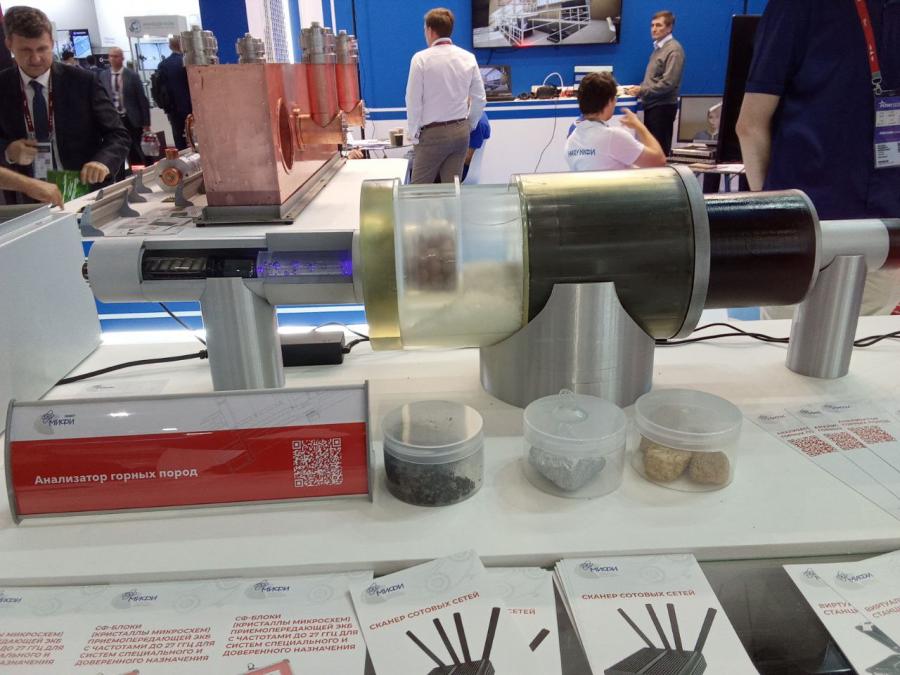MEPhI has developed a neutron analyzer for rock, a unique device designed to determine the chemical composition of samples of various natures. The development was presented at the ARMY-2024 Forum.

The device is able to determine the percentages of chemical elements that make up the rock by irradiating the sample with fast neutrons. The device has a number of advantages over analogues: the sample analysis time takes only 30 minutes, and, due to the high penetrating power of neutron radiation, elemental analysis (volumetric and non-destructive) passes through the entire volume of the sample, and in addition, the device allows you to determine the presence of light elements in the sample, such as hydrogen, boron or chlorine.
The new device can be used in the mining and petroleum industries, in metallurgy, as well as in scientific research.
As told by the engineer of the Department of Applied Nuclear Physics at MEPhI University Oleg Chakilev, the neutron radiation method is based on measuring the spectra of secondary gamma radiation that occurs when a rock is irradiated with neutrons. As a result of the first collisions of neutrons with the nuclei of rock atoms, the so-called inelastic neutron scattering begins, in which the neutrons slow down, transferring most of the energy to the excitation of the nuclei of the target atoms. As a result, the nuclei begin to emit gamma rays, the spectrum of which is an individual characteristic of atoms.
But the interaction of neutrons with the atoms of the sample does not end there. The process of slowing down fast neutrons during inelastic interactions lasts several tens of microseconds. Then the radiation of thermal neutrons occurs in the substance of the rock. Having slowed down to thermal energy, neutrons are captured by the nuclei of the elements and go into an excited state. The lifetime of thermal neutrons is about 100 microseconds. The consequence of the radiation capture of a thermal neutron by the nucleus of an atom is also the immediate emission of gamma quanta. The gamma-ray spectrum of radiation capture is also an individual characteristic of the atomic nucleus.
Gamma radiation of inelastic scattering and radiation capture from the sample is recorded by a scintillation detector based on a lanthanum bromide crystal. When gamma radiation interacts with the detector substance, flashes of light are formed, which are converted into electrons using a photocathode. Next, the process of avalanche reproduction of electrons in a photoelectron multiplier occurs: the primary signal is multiplied several thousand times, thereby generating electrical pulses that are recorded by electronic equipment, allowing measuring the characteristics of gamma radiation.
As a result of the installation, energy spectra of the gamma radiation distribution are formed, while the gamma radiation energy is individual for each chemical element contained in the sample. The number of gamma rays detected by the detector in certain energy regions is proportional to the concentration of elements - therefore, measuring the counting rates characteristic of each element in the energy regions makes it possible to determine the content of elements in rocks. The neutron analyzer is thus able to provide the results of elemental analysis in a short period of time without destroying the analyzed sample.
During the operation of the installation, all radiation safety standards are observed, and in its off state there is completely no radiation, thanks to the use of a pulsed neutron generator 07 T, developed by a partner of the MEPhI – All-Russian Research Institute of Automation named after N. L. Dukhov.





